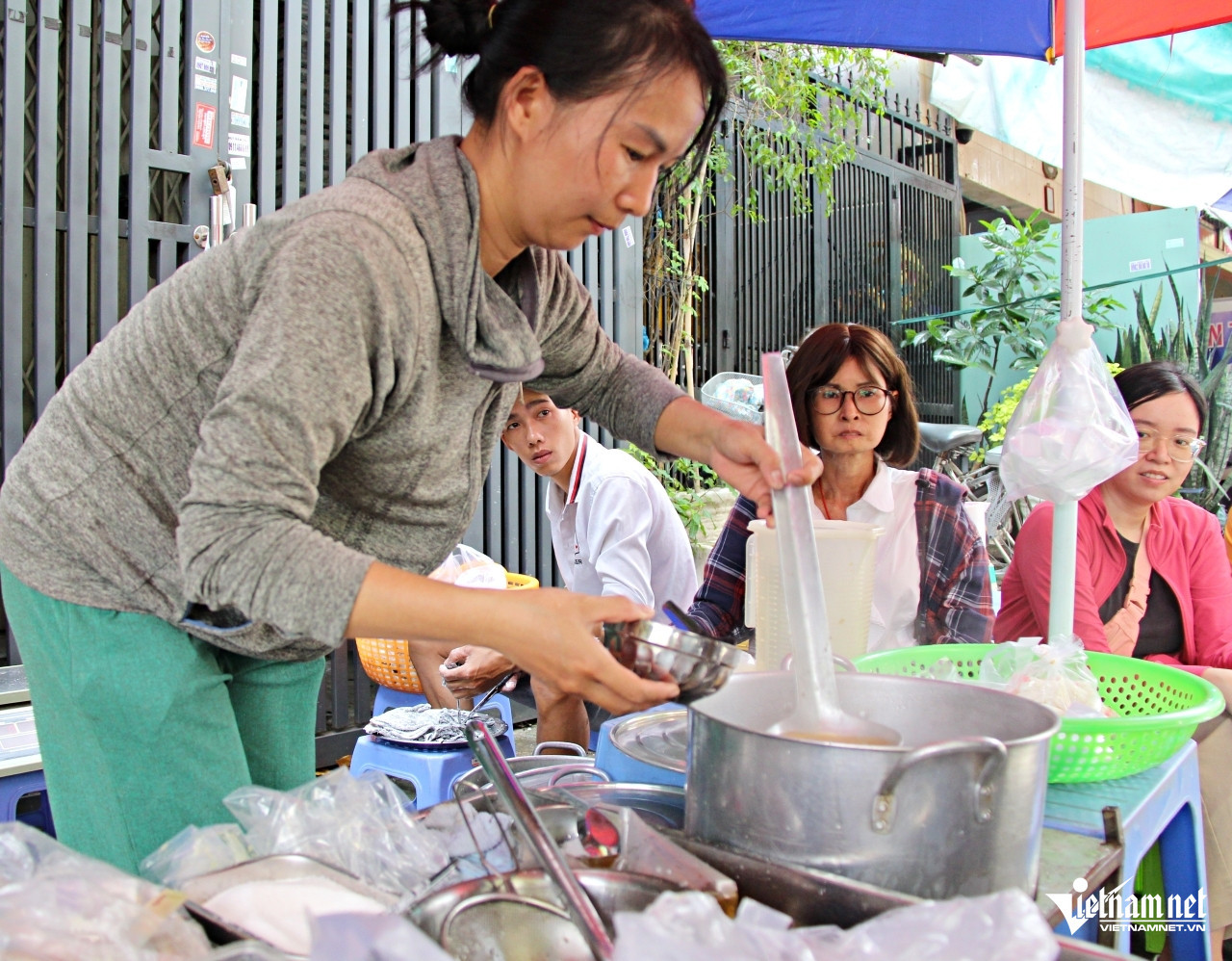
On the first day of the month, Ms. Nhat Binh's dessert stall outside Quan Am Pagoda (Phu Trung Ward, Tan Phu District, HCMC) becomes unusually crowded. Customers come to try the famous chè phân gà (chicken dung dessert), a specialty with a peculiar name.
Ms. Binh explained that the dessert, a traditional dish of the Chinese community, was brought to Vietnam by immigrants. Her family has been selling it for over 20 years, but it gained broader attention after being shared on social media.
In Chinese, the dessert is called cáy xỉa thằng, which translates to "chicken dung," hence the unusual Vietnamese name.
The dish is made primarily from lá mơ lông (Paederia foetida leaves) and rice flour. To prepare it, the leaves are cleaned, ground, and mixed with rice. The mixture is then combined with tapioca flour, shaped into small cakes, and steamed. Once cooled, the cakes are sliced into thin, noodle-like strips.
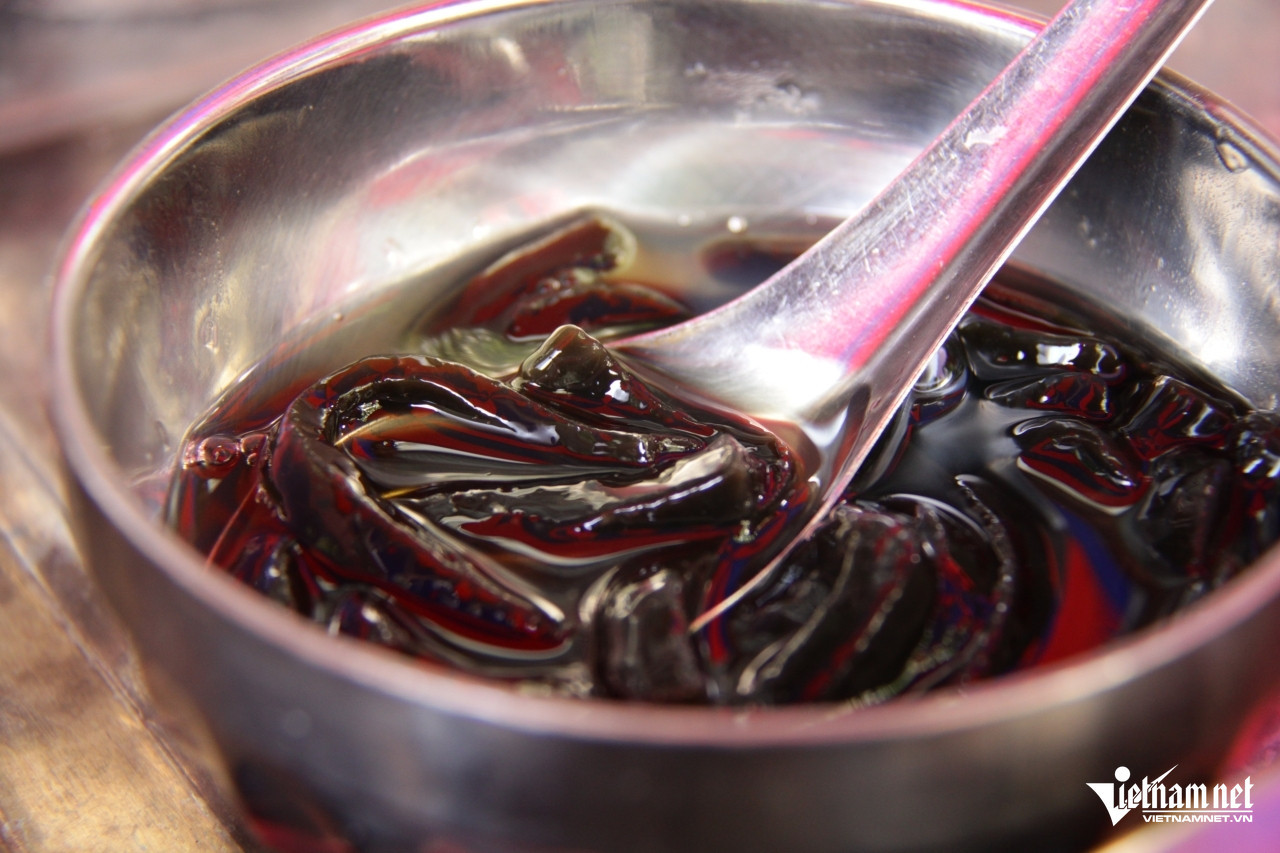
The resulting noodles have a striking green-black hue. To prevent them from sticking together, they are coated in a fine layer of dry flour.
The dessert boasts a distinctive look and flavor. When processed correctly, the lá mơ lông gives the noodles a soft, chewy texture with a mild fragrance rather than an overpowering smell. The dessert is served in a sweet, ginger-infused syrup, which adds a warm, refreshing aroma.
Ms. Binh noted that cáy xỉa thằng is best enjoyed hot. When a customer orders, the fresh noodles are boiled, placed in a small bowl, and topped with hot ginger syrup.
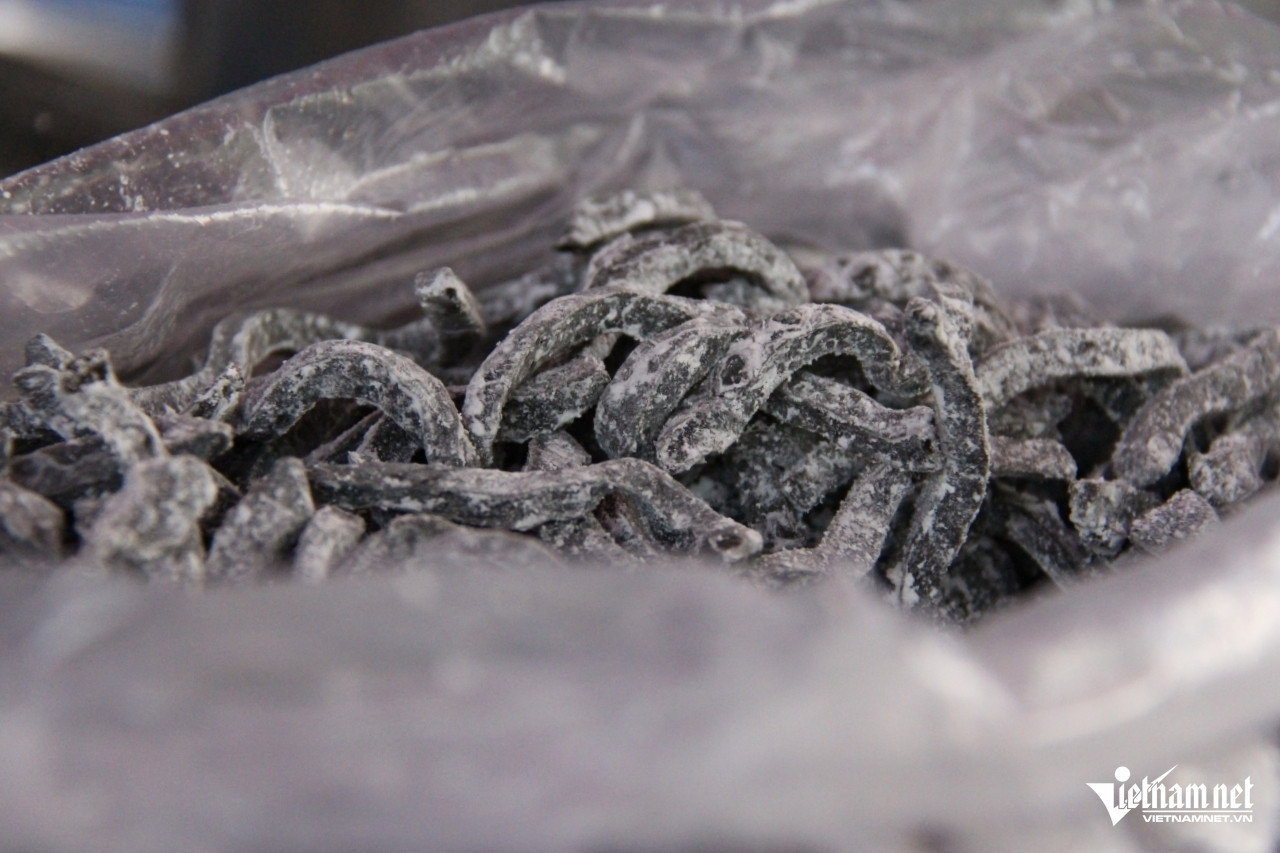
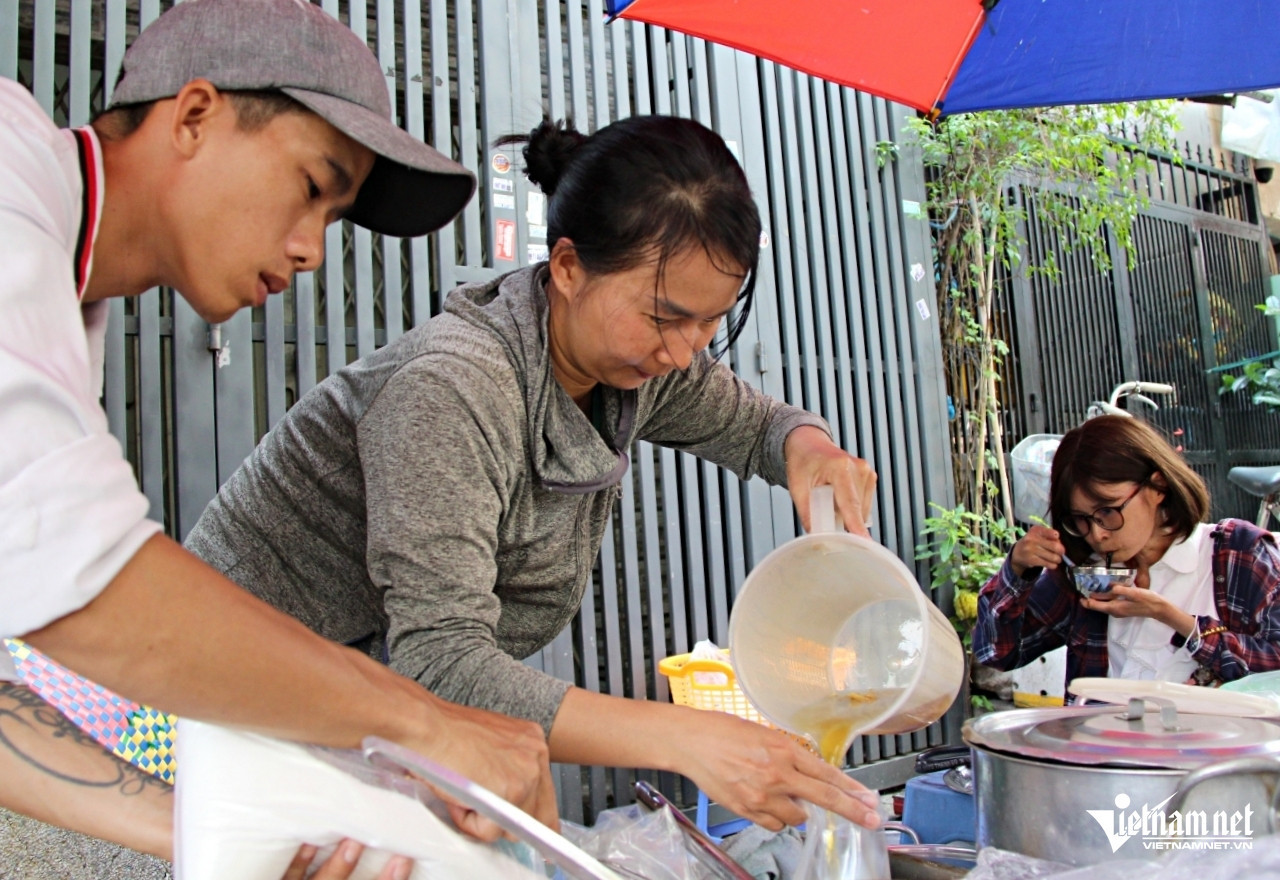

Ms. Binh sells the dessert only on the 1st and 15th of the lunar month, coinciding with Buddhist observances. These are the busiest days for her stall, drawing large crowds.
Each portion costs between 16,000 and 32,000 VND. On selling days, Ms. Binh prepares over 500 servings, using more than 10 kg of noodles. In addition to cáy xỉa thằng, she also offers corn pudding and corn porridge.
Because her stall is temporarily set up on the sidewalk, there is limited seating for customers. Many opt to order takeout.
Most of her patrons are members of the Chinese-Vietnamese community who appreciate the nostalgic, traditional dessert. Some even buy the raw noodles to prepare the dish at home.
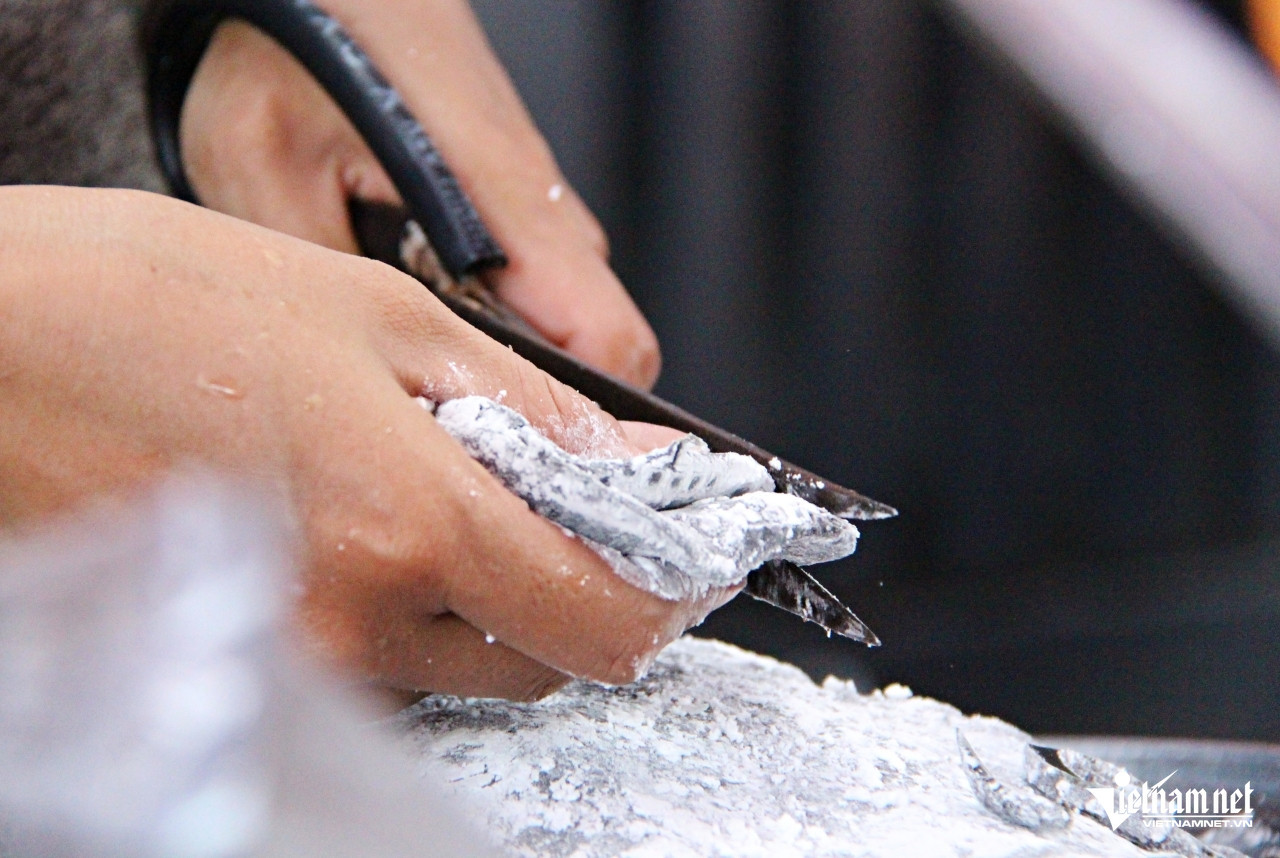
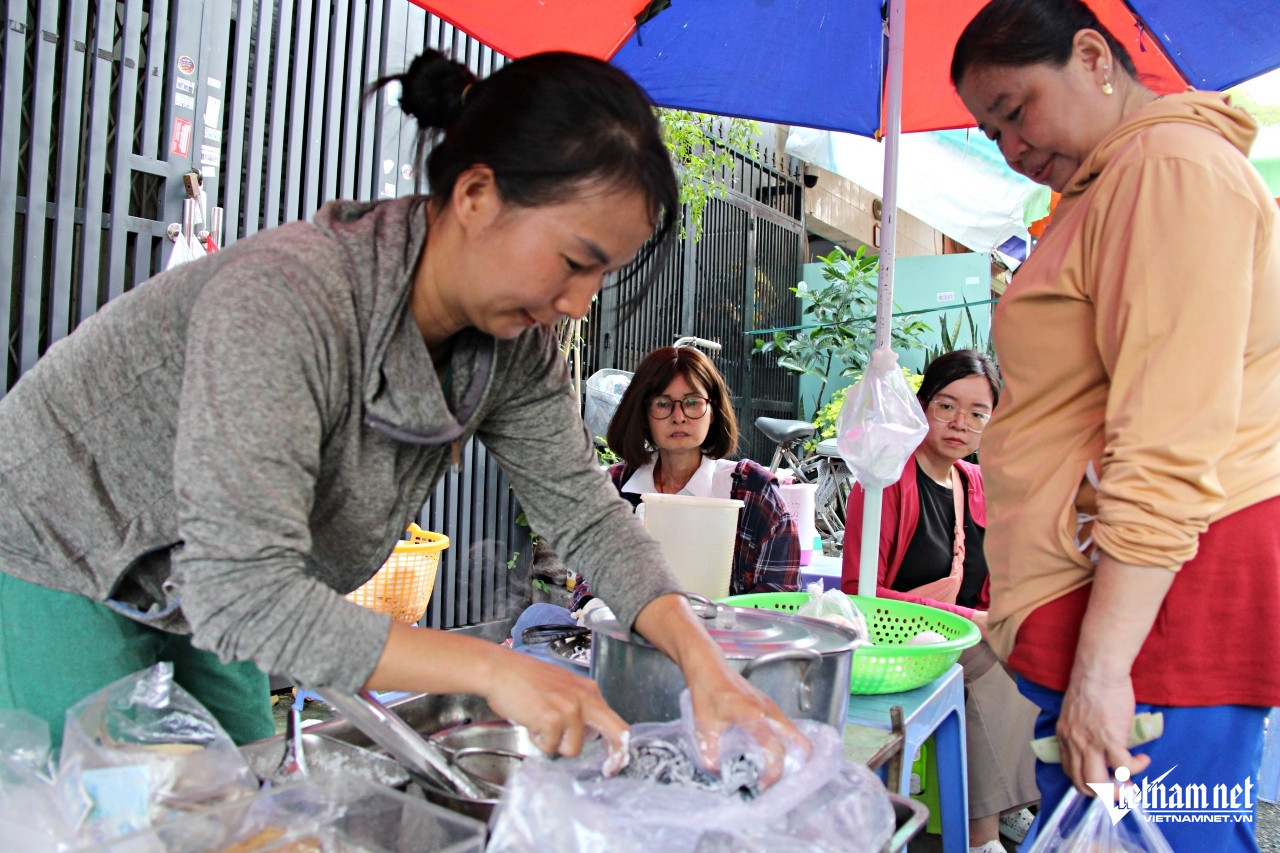
Luu Xuan Phuong, a 56-year-old customer from Tan Phu District, often visits the stall after worshiping at Quan Am Pagoda. Finding no seats available, she decided to purchase half a kilo of the noodles to cook at home.
She noted that although cáy xỉa thằng is a traditional Chinese dish, it was rarely sold in the past, with families typically preparing it themselves for special occasions like the third day of the third lunar month.
Since the dish is made from lá mơ lông, it requires precise preparation to eliminate its strong odor and bitterness. "I’m grateful that Ms. Binh makes this dish so I can enjoy it without the hassle of cooking it myself," Phuong said.
Phuong highlighted the health benefits of the dessert: "Despite its unflattering name, this dish is delicious and good for the body. Made from lá mơ lông, it helps regulate blood flow, detoxify the body, and alleviate stomach pain."
She added that the ginger syrup enhances digestion and warms the body, making it particularly comforting on cold days.
Ha Nguyen






